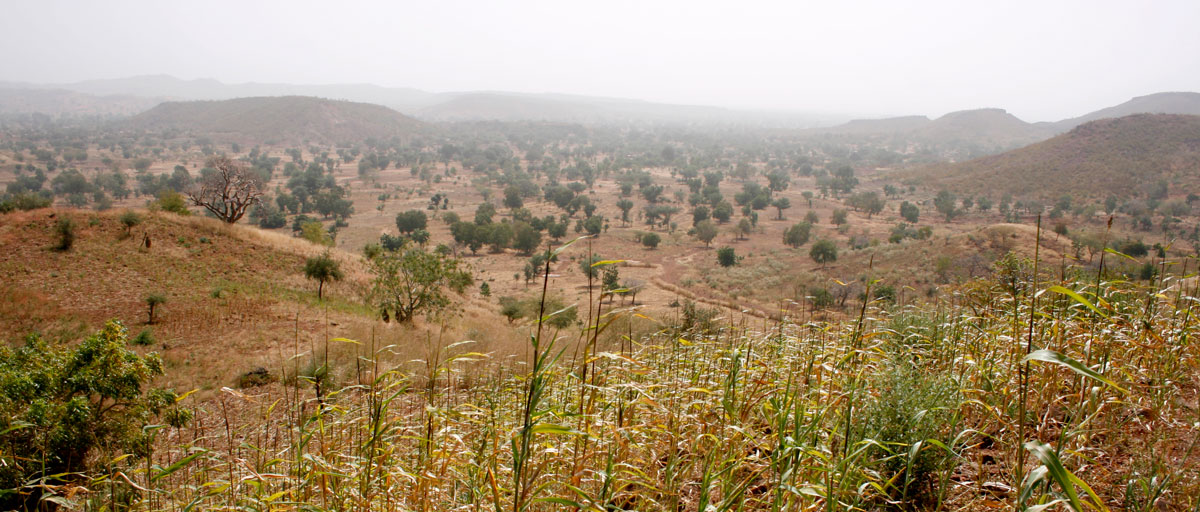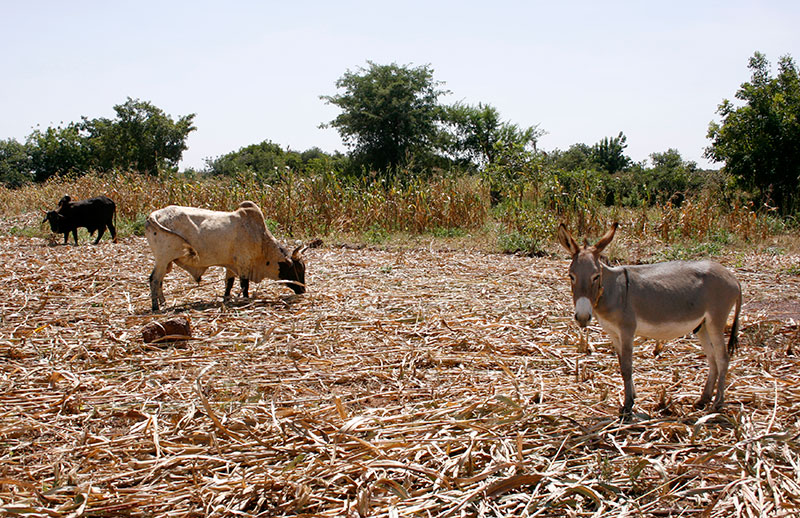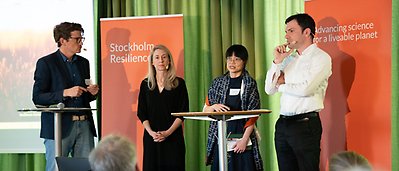
Sorghum growing on the hillside in a village close to Kaya in northern Burkina Faso. Below, a mixture of fields, trees, shrubs, homesteads and a depression in the distance make up the multifunctional landscape of this village. Photo: K. Malmborg
Landscapes in the Sahel are multifunctional and provide multiple benefits for livelihoods
This multifunctionality must be considered in development interventions that can otherwise cause trade-offs
Landscapes in northern Burkina Faso consist of a patchwork of different landscape units, with overlapping but distinct sets of ecosystem services generated in each of them
The landscape units, such as depressions, shrublands, and homesteads, each generate multiple ecosystem services. The multifunctionality of these landscapes helps build resilience by offering ecosystem services with different responses to disturbance. The full sets of ecosystem services and benefits from different landscape units must be included in assessments of how people depend on landscapes and considered when interventions to e.g. increase agricultural production are designed. Otherwise, changes in landscapes might have unintended and unforeseen consequences through trade-offs with other ecosystem services that people also depend on [Sinare et al 2016]. Further reading: New method based on social-ecologically defined patches assess ecosystem services’ role for livelihoods in poor rural areas
The landscape units and their related ecosystem services must be understood through local knowledge, which is seldom included in ecosystem services assessments
Most existing ecosystem service assessment approaches depend on databases of already collected social and ecological data. However, such data is scarce and not always publicly available in the Sahel region. Further reading: Local knowledge about ecosystems key to grasping landscape multifunctionality: Q&A with Hanna Sinare
A combination of local in-depth field study, remote sensing and groundtruthing can be used to map benefits from ecosystem services at the scale of administrative provinces
Benefits from local landscapes to livelihoods are distributed across the whole landscape at the provincial scale in Burkina Faso, but there are differences in patterns between benefits. Annual crops, for example, have hotspots around habitations, material assets and energy have hotspots in (often more remote) shrublands, and resources to sustain livestock are relatively evenly spread out across the whole landscape. This means that livestock production will be affected by interventions and changes in any part of the landscape [Malmborg 2015; Malmborg et al in review].
The local landscape plays an important role to build resilience by compensating for crop loss during drought years
Years with too little, or unfavourable distributed rainfall are common in the Sahel, causing yield reductions. People compensate for these reductions in various ways, and in these compensation strategies, the local landscape plays an important role. Selling of products from the local landscape to gain cash income is more important than increased consumption of wild foods [Sinare et al 2016]. The most important strategy is to sell livestock to gain cash income and be able to buy food. However, as it is a considerable investment to build up a herd, this is a strategy that cannot be used so often.
Livelihood diversification is closely linked to farming
People both in Niger and Burkina Faso strongly identify themselves as farmers. Agriculture is their main livelihood activity. At the same time, livelihood diversification including small-scale business, migration and remittances from relatives, is important for most households. However, these non-farm activities such as small-scale business and migration are not disconnected from the agriculture. Data from Niger shows that the part of the yield that is sold generates income that allows financial capital to invest in small-scale business or migration [Puill, 2010]. Further, income from small scale business and remittances from household members who has migrated are used to invest in the farm, for example to buy small cattle for fattening, repay land in mortgage or hire labour to work on the fields during the growing season. Yield from women’s fields in particular are used to invest in non-farm livelihood activities.

Cattle and a donkey eating leaves and stalks from the sorghum plants left in the field after harvest in a village close to Ouahigouya in northern Burkina Faso. Photo: K. Malmborg
Hanna Sinare is a postdoctoral researcher for GRAID working with synthesising SRC research on social-ecological systems, ecosystem services, and development in the West African Sahell.
Line Gordon is the deputy director and deputy science director at the Stockholm Resilience Centre. She is also assistant professor at the centre with a focus on freshwater resources, ecosystem services and food production
Elin Enfors Kautsky's research centers on pathways for transformative change towards sustainability, and she also leads a section of the GRAID programme, which focuses on operationalizing resilience thinking in practice.
Katja Malmborg is a PhD student who focuses on ecosystem services and resilience assessments
LATEST NEWS
-

Research news | 2024-07-05
Do hunting and fishing bring us closer to nature?
Sustainably harvesting wildlife can foster an increased sense of stewardship, a new article in Nature Sustainability argues.
-

General news | 2024-06-18
Centre leadership appointed for another term
Centre Director Line Gordon and Centre Deputy Director Lisen Schultz have been appointed to continue in their respective positions for another three years. The appointment was made by Stockholm University leadership
-

General news | 2024-06-12
Centre science featured in new Spotify podcast hosted by Alexander Skarsgård
“How We Fix This”, a new podcast series from Spotify and Norrsken, delves into concrete solutions to some of the world's most pressing sustainability issues. It is hosted by Emmy and Golden Globe award-winning actor Alexander Skarsgård and features several Centre researchers.
-

General news | 2024-05-27
Centre researcher Peter Søgaard Jørgensen joins the Young Academy of Sweden
Centre researcher Peter Søgaard Jørgensen has been elected into the Young Academy of Sweden, a junior version of the Swedish academies, including the prestigious Royal Swedish Academy of Sciences
-

General news | 2024-05-20
First Swedish citizens' assembly: Sweden needs to be united on climate
Make climate change a school subject, invest in high-speed trains and make public transport more reliable, equal and cheaper. These are 3 of 22 proposals from Sweden's first national citizens' assembly on climate change
-

General news | 2024-05-17
"If the planet doesn’t work, we will not be able to live on it”
The decisions that humanity makes this decade will shape the living conditions on our planet for many generations to come.




